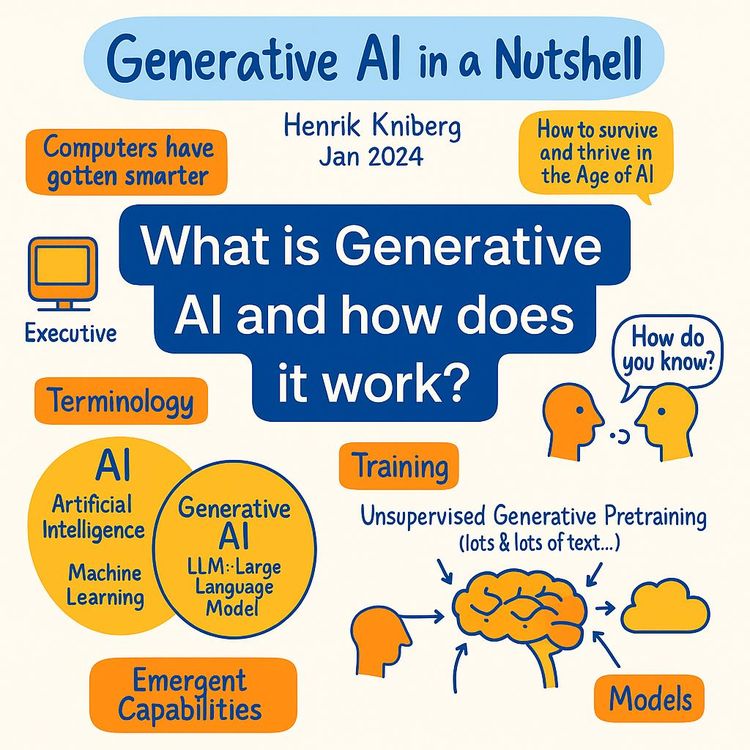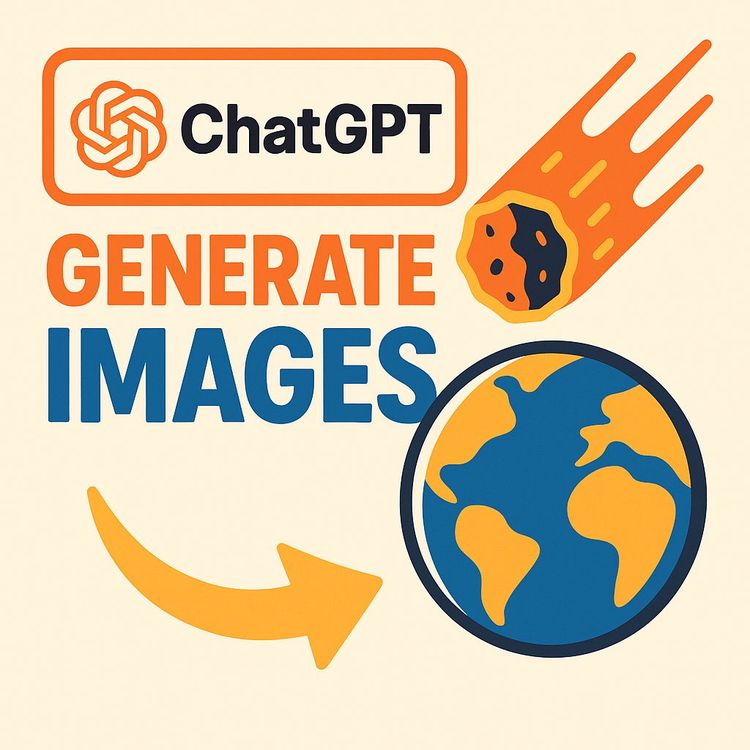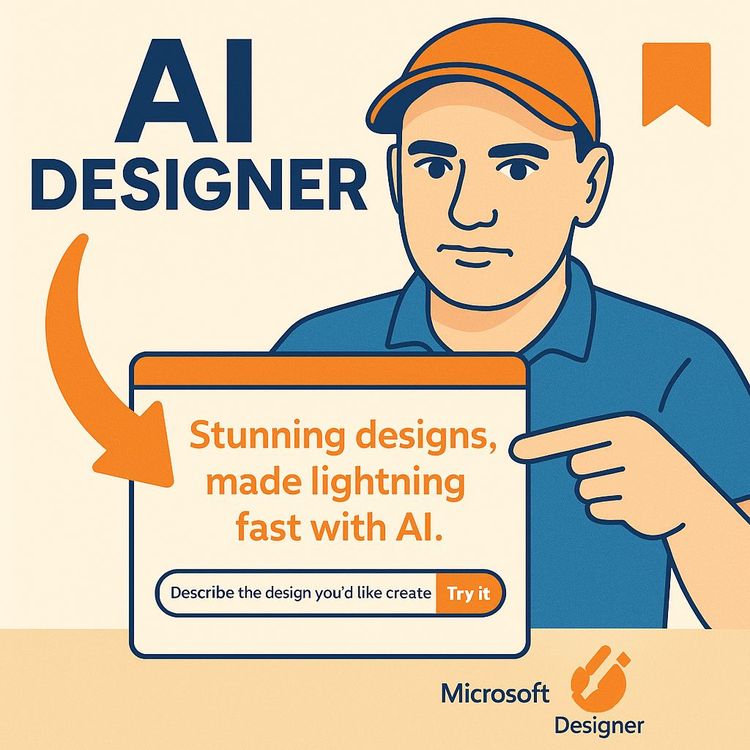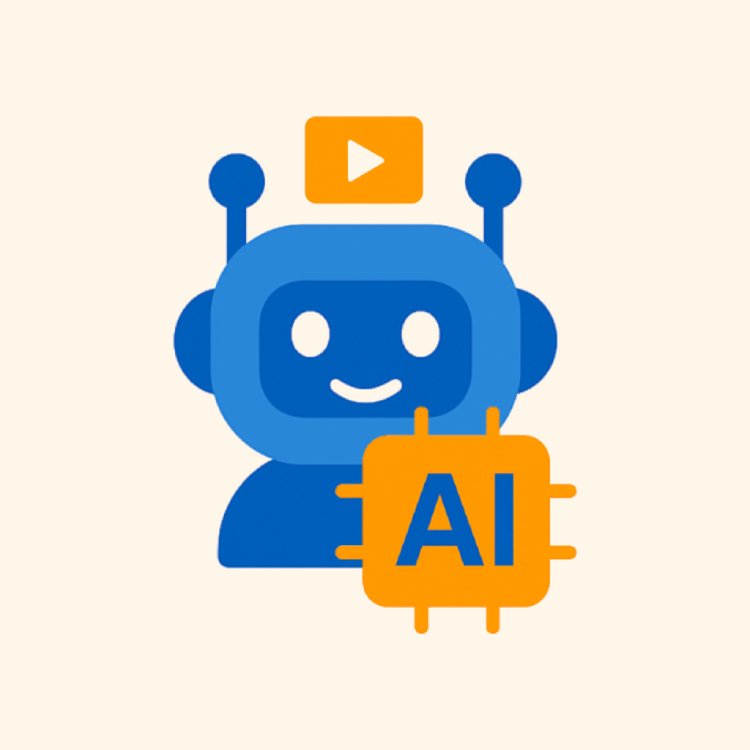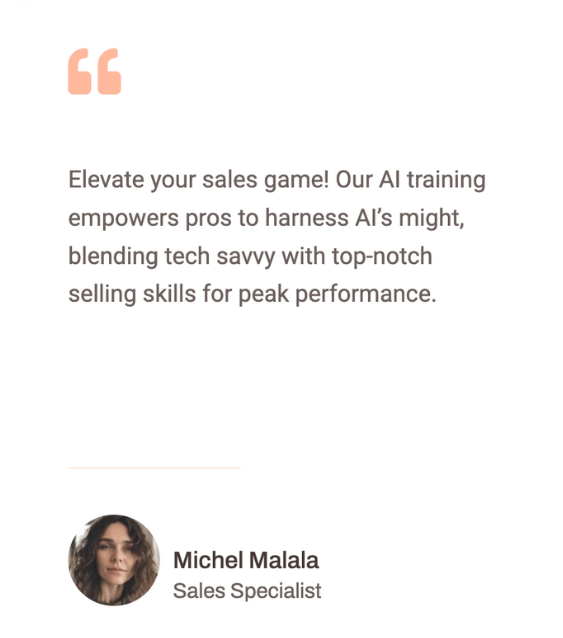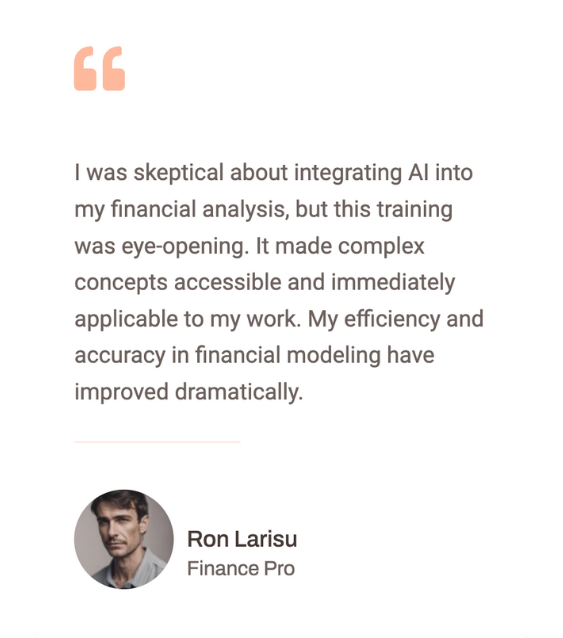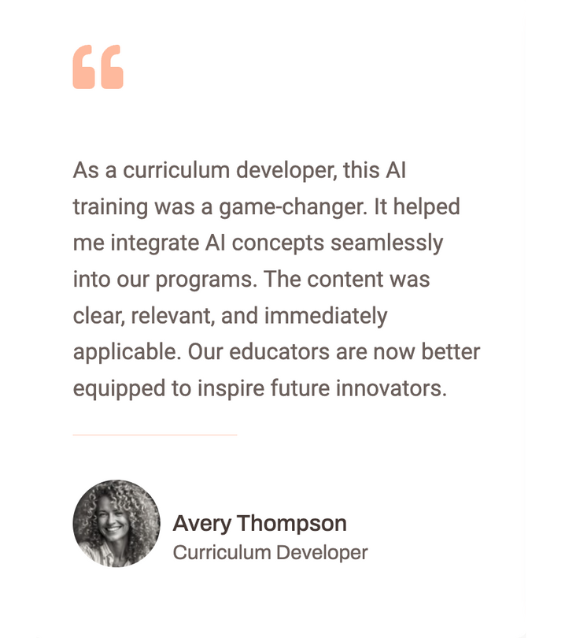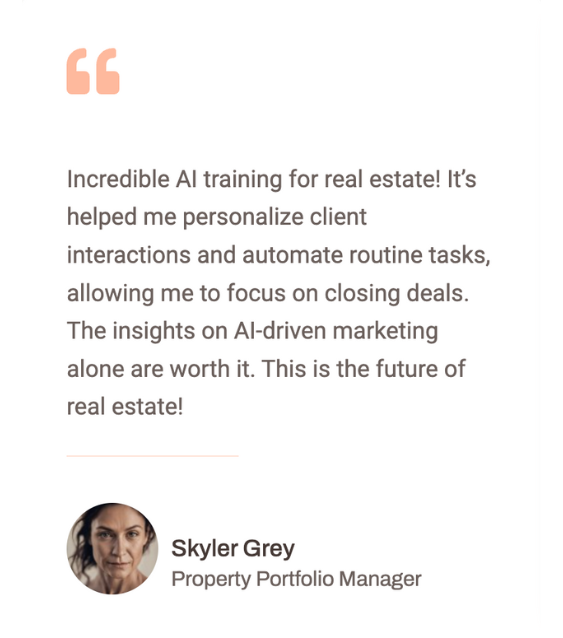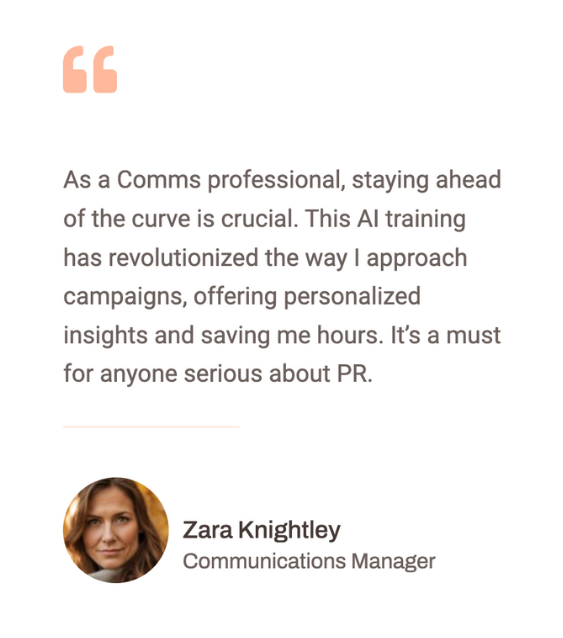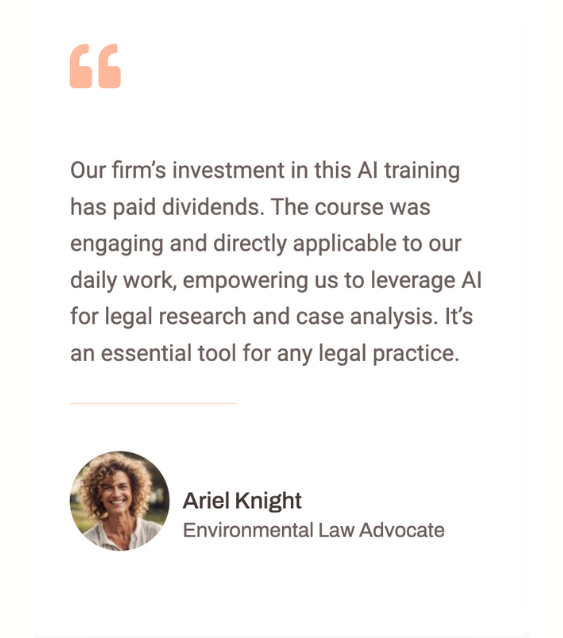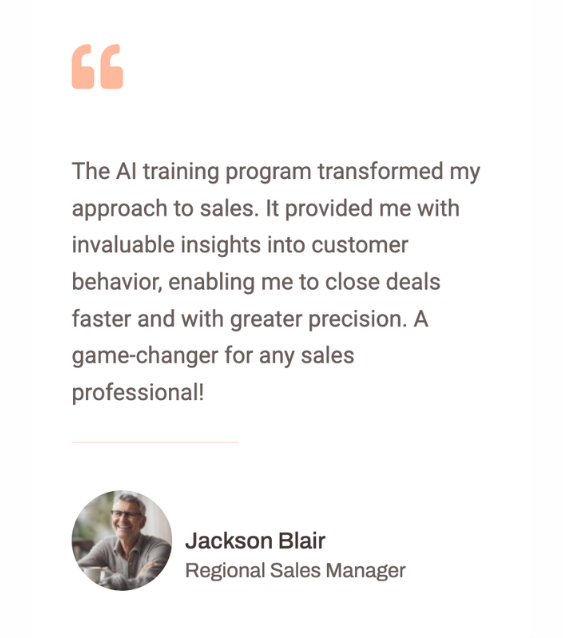Model Context Protocol (MCP) Quickstart: LLM Tools & Servers (Video Course)
Build smarter AI in 26 minutes. Learn MCP, the USB for AI, that turns brittle one-off integrations into plug-and-play connections. See how hosts, clients, and servers work, use tools/resources/prompts, and walk away ready to ship your first server.
Related Certification: Certification in Building, Integrating, and Operating MCP LLM Tools & Servers

Also includes Access to All:
What You Will Learn
- Explain the Model Context Protocol (MCP) and its benefits
- Describe the Host, Client, and Server architecture roles
- Build MCP servers via no-code platforms and code-based methods
- Design servers that combine Tools, Resources, and Prompt Templates
- Implement transports and manage the MCP connection lifecycle
Study Guide
MCP In 26 Minutes: The Protocol That Unlocks AI's True Potential
Let's cut right to it. You're seeing AI applications pop up everywhere, but underneath the slick user interfaces, there's a chaotic mess. Every time a developer wants an AI to do something new,like check a calendar, pull a sales report, or send an email,they have to build a fragile, custom-coded bridge from scratch. It's slow, it's expensive, and it's holding back what these incredible models can actually do.
Imagine trying to build a modern computer if every single device,your mouse, your keyboard, your printer,needed a unique, proprietary port. It would be a nightmare of adapters and incompatible hardware. That was the world before the USB standard. And that's the world of AI development right now.
This course is about the solution. It's called the Model Context Protocol, or MCP. This isn't just another piece of jargon. It's the "USB standard" for AI. It's an open protocol that creates a universal language for AI applications to connect with any tool or data source, instantly.
Over the next 26 minutes, we're going to dismantle this protocol piece by piece. You'll learn not just what it is, but why it represents a fundamental shift in building intelligent systems. We'll explore the architecture, the powerful capabilities it unlocks, and how you,whether you're a developer, a business leader, or just an ambitious builder,can start using it. This is your guide to moving from fragmented, one-off AI projects to building a scalable, interconnected ecosystem of intelligence.
The Old World vs. The New: Why Standardization is Everything
To really grasp the power of MCP, you have to understand the pain it solves. Think about the old way of doing things, the world before this protocol.
The Fragmented Past
An AI application, on its own, is just a brain in a jar. It's powerful, but it's disconnected from the real world of your business. To make it useful, you need to give it arms and legs,the ability to interact with your systems.
Here's what that used to look like:
1. You want your AI chatbot to access your company's CRM. A developer has to study the CRM's specific API, write custom code to handle authentication, figure out how to format requests, and then parse the unique responses.
2. Now, you want it to also access your project management tool. Repeat the entire process for a completely different API, with different rules and data structures.
3. Then you want it to query a proprietary database. Again, another custom, one-off integration.
The result was a tangled web of brittle code. Each application was an isolated island. The work wasn't reusable. The logic for calling tools, the prompts for guiding the AI, the methods for accessing data,it was all bespoke. As one of the core documents on MCP states, "Before MCP, there was fragmented AI development with each AI app you would need to have a custom implementation [for] custom prompt logic, custom tool calls, and custom data access."
This is the digital equivalent of every city having its own unique electrical outlet design. It creates friction and slows down progress to a crawl.
The Standardized Future
MCP changes the game entirely by creating a single, universal standard. It defines a clear, predictable way for any AI application to talk to any external tool. It's an open protocol that, in simple terms, "standardizes how your LLM applications connect to and work with your tools and data sources."
Instead of building a new bridge for every tool, you just build one bridge that conforms to the MCP standard. And on the other side, tool creators do the same. This creates a "plug-and-play" ecosystem. An AI application that speaks MCP can instantly connect to a vast and growing library of thousands of pre-built MCP tools without any new code. This is how you get from a handful of clunky integrations to an explosion of capability.
The Core Architecture: Host, Client, and Server
The elegance of MCP lies in its simple, modular architecture. It's built on a classic client-server model, but with three distinct parts that you need to understand: the Host, the Client, and the Server.
1. The Host
The Host is the home of the AI. It's the application or environment where the Large Language Model operates. This is the thing your end-user actually interacts with.
- Example 1: An AI desktop assistant. When you're talking to an app on your computer and asking it to do things, that application is the Host.
- Example 2: An automation platform like n8n. The workflow builder itself is the Host, and it wants to give its AI capabilities access to the outside world.
Other examples include your code editor (IDE), a custom-built enterprise chatbot, or any LLM-powered application you can imagine.
2. The Server
The Server is the tool provider. It's a small, lightweight program that "wraps" around a specific tool or data source and exposes its capabilities using the MCP standard. It's the gatekeeper to a specific function.
- Example 1: A Gmail Server. This server wouldn't contain the entire Gmail application. It would just expose a few key functions, like `send_email` or `read_latest_emails`, in a way that MCP can understand.
- Example 2: A PostgreSQL Server. This server would provide functions to query a specific database, like `run_sql_query` or `list_tables`.
There are already over 20,000 of these pre-built servers for everything from interacting with GitLab to pulling real-time stock market data.
3. The Client
The Client is the crucial middleman. It's a component that lives *inside* the Host application. Its only job is to communicate with an MCP Server using the rules of the protocol. It acts as the bridge, establishing the connection, sending requests from the Host, and relaying the Server's responses back. It manages the one-to-one connection between the AI's home and the tool it wants to use.
So, the flow is simple: The Host (your app) contains a Client. When the AI needs a tool, the Client reaches out over the network and establishes a connection with a specific Server to access its capabilities.
Inside the Server: The Power Trio of Tools, Resources, and Prompt Templates
Now, this is where it gets really interesting. The protocol's designers understood that giving an AI true context is about more than just letting it press buttons. As the briefing notes state, "MCP servers are actually even more powerful than just giving your agents tools. There's a lot more that you can actually do."
An MCP server can provide three distinct types of capabilities.
1. Tools: The Actions
These are what most people think of first. Tools are executable functions that the AI can actively invoke to perform an action and change the state of something in the world.
- Use Case 1: Your AI agent needs to schedule a meeting. It invokes the `create_calendar_event` tool from a Google Calendar MCP server, passing in the attendees, time, and title as arguments.
- Use Case 2: An automated financial analyst agent needs to execute a trade. It uses the `execute_buy_order` tool from a brokerage's MCP server with the stock ticker and quantity.
2. Resources: The Read-Only Context
This is a subtle but incredibly powerful feature. Resources are read-only data sources that the server exposes. The AI can query this data for context, but it cannot change it. This is far more efficient than using a "tool" to constantly fetch static information.
- Use Case 1: An AI coding assistant needs to understand your project's dependencies. Instead of running a tool, it can read a `package.json` file exposed as a Resource by a local file system server. This gives it instant, low-cost context.
- Use Case 2: A customer support agent needs to know a user's history. An MCP server connected to your CRM could expose a "customer_interaction_log" as a Resource. The agent can read this entire history at once to get fully briefed, rather than making dozens of separate tool calls to fetch each past ticket.
3. Prompt Templates: The Blueprints for Excellence
This is the secret weapon for ensuring high-quality output. A Prompt Template is a pre-engineered, structured prompt blueprint designed for a specific task. It takes the guesswork and the burden of advanced prompt engineering away from the end-user.
- Use Case 1: A server for analyzing spreadsheet data. You could give it a file and say "summarize this," hoping for the best. Or, you could use the server's built-in `analyze_sheet_data` Prompt Template. The template would guide the LLM with a highly optimized structure, telling it exactly how to analyze columns, identify trends, and format the output into a perfect report, every single time.
- Use Case 2: A medical AI used for documentation. A server could contain a `generate_soap_note` Prompt Template. A doctor could feed it a messy transcript of a patient visit, and the template would ensure the AI structures the output perfectly into the four required sections: Subjective, Objective, Assessment, and Plan.
A single server can combine all three. Imagine a SQLite database server. It could have Tools (`read_sql`, `write_sql`), a Resource (a read-only changelog file), and Prompt Templates ("Generate a summary report of Q4 sales"). This combination gives the AI not just actions, but deep context and guided intelligence.
The Handshake: Communication Lifecycle and Transports
So how do the Client (in the Host) and the Server actually talk to each other? The process follows a simple lifecycle and uses a defined "transport" mechanism.
The lifecycle is intuitive:
1. **Initialization:** The Client connects to the Server.
2. **Message Exchange:** The Client sends requests ("use this tool"), and the Server sends back responses ("here's the result"). This can go back and forth many times.
3. **Termination:** The connection is closed.
The "transport" is the underlying method used to send these messages. The choice of transport depends on where the server is located.
Local Transport
If the Server is running on the same machine as the Host, the communication is dead simple. It can happen directly through a standard output log. It's like two people in the same room passing notes directly,fast and efficient.
Remote Transports
When the server is on the cloud or another machine, things get more interesting. There are two main approaches:
- Stateful (HTTP + SSE): Think of this like dining at a fancy restaurant. The waiter (the Server) remembers you, your table, and what you've already ordered. The server maintains the context of the entire interaction. You can make a follow-up request like "I'll have the same again," and the server understands because it remembers the "state" of your session. This is great for conversational, multi-step tasks.
- Stateless (Streamable HTTP): This is like ordering at a fast-food counter. Every time you go to the cashier, it's a brand new transaction. The server doesn't remember your previous order. Each request must contain all the information needed to be fulfilled. It's clean, simple, and highly scalable.
Here's the key takeaway: The preferred modern transport method is Streamable HTTP because it's flexible enough to support *both* stateful and stateless connections, giving developers the best of both worlds.
From Theory to Reality: How to Build MCP Servers
This all sounds great in theory, but how do you actually create one of these servers? The beauty of MCP is that it has democratized tool creation. There are paths for both non-coders and expert developers.
The No-Code Approach
Platforms like n8n have made building simple MCP servers incredibly accessible. You don't need to write a single line of code.
- **The Process:** You use a visual, node-based editor. You start with a "Server Trigger" node. Then, you drag and drop other nodes that represent the tools you want to offer. You might add a "Gmail" node to give it a `send_email` tool and a "Calculator" node to give it a `calculate` tool.
- **The Outcome:** Once you activate this workflow, the platform generates a production URL. That URL *is* your MCP Server endpoint. You can copy that URL and paste it into any MCP-compatible Host, like the Claude desktop app, and instantly your AI has access to the tools you just defined.
- **The Limitation:** This method is fantastic for rapidly deploying tool-based servers. However, current no-code solutions are primarily focused on providing Tools and may not have native support for creating custom Resources or Prompt Templates.
The Code-Based Approach
For maximum power and flexibility, you'll want to write code. Using a language like Python, you have complete control to build sophisticated, multi-faceted servers.
- **The Process:** Developers use libraries with simple decorators to define the server's capabilities. A function can be turned into a tool by adding `@mcp_tool` above it. A data source can be exposed as a resource with `@mcp_resource`. Prompt Templates can be defined as structured strings or files directly within the server's logic.
- **The Outcome:** This unlocks the full potential of the protocol. You can build that dream server for analyzing Google Sheets data we talked about,one with Tools to write new data, a Resource to provide read-only access to sheet columns for context, and a Prompt Template to generate a perfect analysis dashboard.
- **Best Practice:** Start with no-code to get a feel for the workflow. When you hit the limits and need custom resources or prompts, you'll be ready to graduate to a code-based solution.
The Big Picture: What This Means for You
MCP isn't just a technical detail; it's a strategic shift with massive implications for how we build with AI.
For Developers, this is a liberation. You're no longer stuck in the endless cycle of writing bespoke integration code. You can focus on building powerful, reusable MCP servers that can be shared, or even sold, as standalone products. Wrap an existing API or a custom function once, and it's available to the entire AI ecosystem.
For Enterprises, this is the key to a scalable and secure AI strategy. Internal teams can build and share standardized MCP servers for proprietary databases, CRMs, and internal software. This empowers all AI applications across the company with controlled, consistent, and secure access to critical business systems. It's how you build a cohesive internal AI platform instead of a collection of disconnected projects.
For End-Users, the result is simply magic. The applications you use every day,your desktop assistants, your code editors, your chat interfaces,will suddenly become vastly more capable. You'll gain access to a world of powerful, integrated tools without ever needing to think about setup or configuration. The tools will just be there, ready to use.
Your Next Move
We've covered a lot of ground, but the core message is simple. The era of fragmented AI development is ending. The Model Context Protocol is laying the foundation for a future of more capable, interconnected, and functionally rich AI systems.
Here are the key takeaways:
- Standardization Unlocks Innovation: MCP is the "USB for AI," turning chaos into a clean, plug-and-play ecosystem.
- Modularity is Power: The Host-Client-Server architecture decouples the AI from its tools, enabling universal reusability.
- Context is More Than Tools: The true power comes from the combination of Tools (actions), Resources (read-only data), and Prompt Templates (guided intelligence).
- Tool Creation is for Everyone: With both no-code and code-based paths, anyone can contribute to the growing ecosystem of AI capabilities.
This protocol marks a maturation point for the entire field. It moves us away from building one-off toys and toward engineering robust, scalable intelligent systems that can seamlessly interact with the digital world.
Your task now is to apply this. If you're a developer, start exploring the official documentation and think about what existing API you could wrap into an MCP server. If you're a business leader, start inventorying your internal systems and identify the first high-value tool you can standardize for your AI initiatives. If you're a builder, fire up a no-code platform and create your first server this afternoon. Don't just learn about the future,start building it.
Frequently Asked Questions
This FAQ gives you straight answers about the Model Context Protocol (MCP) so you can evaluate, implement, and scale it with confidence. It's organized from basics to advanced topics, with clear definitions, trade-offs, and real examples you can apply to your workflows. Use it to cut through guesswork, pick the right approach, and move from concept to production without wasting time.
Foundational Concepts
What is the Model Context Protocol (MCP)?
Short answer:
MCP is an open standard for connecting LLM-powered apps to external tools and data through a consistent interface. It was developed by Anthropic. Instead of custom integrations for each system, MCP creates one way to discover, call, and manage capabilities across many services.
Analogy:
Think USB for AI. Before USB, every device used a different connector. USB standardized the port. MCP does the same for AI applications that need calendars, CRMs, databases, or analytics.
Why it matters:
It simplifies architecture, reduces maintenance, and shortens delivery cycles. You get a clean separation between your AI app (host) and external capability providers (servers).
Business example:
A sales assistant in Claude Desktop connects to a CRM MCP server to pull account notes, to a calendar server for scheduling, and to an email server to draft follow-ups,without writing three separate custom integrations.
Why is MCP considered a significant advancement in AI development?
The problem before MCP:
Every tool required unique code, prompts, auth flows, and error handling. Multi-tool agents became brittle and expensive to maintain.
What MCP changes:
A standard interface for capability discovery, invocation, and context sharing. You connect once to the protocol rather than re-inventing the integration per tool.
Practical impact:
Faster delivery, easier reuse, simpler security reviews, and a shared ecosystem of servers that work across hosts.
Business example:
Ops teams can add a ticketing MCP server today and a knowledge base server tomorrow without refactoring their LLM app. The host sees new tools via the protocol and can start using them immediately.
What has been the impact of MCP on the availability of AI tools?
Short answer:
It has created a growing ecosystem of MCP servers that expose ready-to-use tools, resources, and prompts. This means faster experimentation and broader capability coverage out of the box.
Why it matters:
Standardization lowers the barrier to publishing useful capabilities. As more teams ship MCP servers, hosts gain instant access to new functions without custom code.
Business example:
Marketing can connect an analytics server (reporting), a CMS server (content updates), and a social scheduler server (posting) in one afternoon,then iterate on prompts instead of wrangling APIs.
Core Architecture and Components
What is the client-server architecture of MCP?
HCS in one line:
Host, Client, Server.
Host:
Your LLM app (e.g., Claude Desktop or your custom agent) where users interact. It embeds the MCP client.
Client:
The component inside the host that speaks MCP, discovers capabilities, and manages calls to servers.
Server:
A lightweight program exposing capabilities (tools, resources, prompt templates) for the client to use.
Business example:
Your finance assistant (Host) includes an MCP client that connects to a Sheets server (Server) to read budgets and to an ERP server to fetch invoices,both via the same protocol.
What is an example of the Host, Client, and Server relationship in action?
Scenario:
Asking for stock data and a chart in an AI assistant.
Flow:
The host (Claude Desktop) routes the request through its MCP client. The client calls an Alpha Vantage MCP server tool to fetch time-series data. The result returns to the host, which formats it into a chart for the user.
Why it works well:
Each piece has a single responsibility. The assistant focuses on reasoning and UX, the client handles protocol messaging, and the server focuses on reliable data access.
Business example:
Swap the data server for a CRM server and the same flow returns pipeline metrics, win rates, and rep activity,without changing the host's code.
What capabilities can be included within an MCP server?
Tools:
Executable functions (send_email, query_db, generate_chart). The client invokes them with structured arguments and gets results back.
Resources:
Read-only data exposed for quick access (logs, docs, views). Great for context without hitting a live API every time.
Prompt Templates:
Reusable, optimized prompts that standardize task execution and reduce prompt engineering overhead.
Business example:
A support server could offer a summarize_ticket tool, a resource for policy docs, and a prompt template for "draft empathetic response with steps and links."
Can you provide an example of a server that uses all three components?
SQLite server example:
Tools: read, insert, update, delete. Resources: a read-only changelog for audit. Prompt Templates: safe-query patterns and reporting prompts.
Why it helps:
Tools do the work, resources provide context and transparency, and prompts enforce consistent behavior and outputs.
Business example:
Analytics teams can ask, "Create a top customers report by revenue and region," using a prompt template that runs safe reads, references the changelog, and returns a formatted summary for stakeholders.
Communication Protocol
What are the main phases of communication between an MCP client and server?
Initialization:
The client connects and discovers capabilities (tools/resources/prompts).
Message Exchange:
The client invokes tools or reads resources. The server processes and returns structured results, possibly streaming progress.
Termination:
The session ends cleanly (or times out).
Business example:
A weekly report job initializes, calls a BI server tool multiple times for metrics, streams partial outputs to show progress, then terminates after packaging the final report.
What is a "transport" in the context of MCP?
Short answer:
The transport is how messages move between client and server. Local transports use process pipes; remote transports use network protocols.
Why it matters:
Transport choice affects latency, state management, streaming, scaling, and deployment options.
Business example:
Local development uses stdout for quick testing; production uses a remote HTTP transport for reliability, security, and observability.
What is the difference between local and remote transports?
Local (same machine):
Simple, fast, often via stdout/stderr. Great for development, prototypes, and offline use.
Remote (networked):
Runs on another machine or cloud. Enables scaling, auth, monitoring, and high availability.
How to choose:
Use local for speed during build, remote for production reliability and team access.
Business example:
Engineering runs a local file-search server for docs during dev, then deploys it remotely so support, sales, and success can use the same source of truth.
What are stateful vs. stateless connections for remote servers?
Stateful:
The server maintains session context across requests (e.g., via HTTP + SSE). Useful for multi-step tasks that need memory.
Stateless:
Each request includes all needed info; the server doesn't remember prior calls. Good for simple, idempotent operations and horizontal scaling.
How to choose:
Use stateful for long-running workflows; use stateless for predictable, repeatable calls.
Business example:
A research assistant benefits from stateful sessions while a pricing calculator works best statelessly for consistent, cacheable responses.
Which transport method is generally preferred for remote connections?
Short answer:
Streamable HTTP is preferred because it supports streaming responses and can fit both session-oriented and request-per-request patterns.
Why it's useful:
It balances simplicity with flexibility, plays well with existing infra, and enables incremental updates to the host.
Business example:
Monthly board report generation streams partial metrics and drafts to the host, allowing review before the final artifact is produced.
Building and Using MCP Servers
How can I use a pre-built MCP server in my AI application?
Steps:
Find a server, copy its endpoint URL, configure it in your host's MCP client settings, and connect. The host will discover available tools, resources, and prompts.
Tips:
Test a single tool first, confirm auth, and log all calls. Then layer in more capabilities.
Business example:
Add a calendar server to your assistant, test "list upcoming meetings," then add an email server to "draft and send prep notes to attendees."
What are the different ways to build a custom MCP server?
No-code/Low-code:
Use platforms like n8n to build workflows and expose them as MCP endpoints. Fast to ship, great for tool-centric servers.
Code-based:
Use languages like Python to implement tools, resources, and prompt templates with full control of auth, logging, and schema handling.
Business example:
Spin up a no-code Gmail sender today; build a coded server next that also exposes policy resources and prompts for compliant outreach.
What are the advantages of building an MCP server with code versus a no-code tool?
No-code benefits:
Speed, accessibility, low lift for simple automations. Good for pilots and internal tools.
Code benefits:
Full TRP support (tools/resources/prompts), custom auth, complex logic, testing, versioning, and CI/CD. Better for long-term, multi-team systems.
Decision rule:
If you need governance, advanced resources, or reusable prompts, code-based wins. If you need a quick connector today, no-code is enough.
Business example:
A proof-of-concept uses n8n; a production-grade customer support server is coded with strict schemas and audit logs.
Can an MCP server built for one host be used with another?
Yes:
Servers are host-agnostic. Any MCP-compatible host can connect by using the server's endpoint and the protocol.
Why it matters:
Build once, reuse everywhere,across desktop assistants, automation platforms, and custom apps.
Business example:
Your data-enrichment server powers Claude Desktop for sales reps and a separate internal tool for analysts without any changes to the server.
Further Learning
Where can I find further resources to deepen my MCP skills?
Recommended sources:
Official MCP documentation for specs and best practices; the Anthropic x DeepLearning.AI course "MCP: Build Rich Context AI Apps with Anthropic" for step-by-step builds; and community tutorials on containerized deployments (e.g., Docker) for production strategies.
How to use them:
Start with docs to grasp protocol shape, follow the course to ship a working server, then use deployment guides to operationalize.
Business example:
Engineering creates a backlog from best practices in the docs, product ships the first coded server via the course, DevOps wraps it with Docker and observability for production.
Getting Started & Fit
Who should learn MCP?
Ideal roles:
Product managers, engineering leaders, solutions architects, data/ML engineers, and operations teams building AI-enabled workflows.
Why it's worth it:
Standardization speeds up delivery, eases vendor swaps, and makes AI capabilities composable across teams and tools.
Quick litmus test:
If you call more than one external system from your AI app,or want to,MCP pays off.
Business example:
A PM leading an AI assistant initiative can adopt MCP to connect CRM, support, and billing with fewer integration headaches.
What are the prerequisites before I start?
Helpful knowledge:
APIs/HTTP basics, JSON schemas, auth patterns (API keys, OAuth), and prompt design. For coding servers, comfort with Python or similar is useful.
Environment:
A host app that supports MCP, access to at least one server endpoint, and a logging strategy.
Business example:
Set up a test environment with Claude Desktop as the host, connect a calendar server, and practice tool calls with real but low-risk data.
How is MCP different from traditional API integrations?
Traditional:
Each tool needs bespoke code, request shaping, auth, retries, and monitoring.
MCP:
One protocol for discovery, invocation, and context. You integrate once; servers become interchangeable.
Trade-offs:
Protocol learning curve and server availability vs. reduced integration burden and faster iteration.
Business example:
Replace three custom API clients (CRM, calendar, docs) with three MCP servers your host can use consistently.
How does MCP compare to chat plugins or automation platforms?
Plugins:
App-specific, limited portability.
Automation platforms:
Great for workflows but not a standard for LLM-to-tool interaction.
MCP:
Protocol-first, host-agnostic, and built around LLM use. It can interoperate with automation tools via servers.
Business example:
Connect an n8n workflow as an MCP server so your assistant can orchestrate steps while keeping a unified interface.
Implementation & Security
How do authentication and secrets work with MCP servers?
Common patterns:
API keys, OAuth, service accounts, or signed requests handled by the server. The host should not expose raw secrets in prompts.
Best practices:
Use a vault, rotate credentials, limit scopes, and log access. Keep auth at the server boundary, not the host's prompt layer.
Business example:
A Gmail MCP server holds OAuth tokens securely and exposes a send_email tool; the host never sees or stores the token itself.
How do I handle permissions and scopes safely?
Principle of least privilege:
Grant only what each tool needs. Separate read vs. write tools. Use per-user or per-service scopes.
Operational tips:
Audit access regularly, tag calls with user identity, and enforce rate limits at the server.
Business example:
A CRM server exposes read_opportunities and write_notes as separate tools with different scopes and approval flows.
How does MCP affect security and compliance?
Security benefits:
Clear boundaries, consistent telemetry, and centralized auth at the server. Easier to review than scattered custom integrations.
Compliance support:
Enable audit logs, data residency controls, and retention policies at the server layer. Classify resources and restrict sensitive tools.
Business example:
Legal requires audit trails. Your MCP servers log who accessed which resource and when, simplifying reviews.
How do I deploy an MCP server to production?
Common approaches:
Containerize (e.g., Docker), run behind an API gateway, add TLS, and set up observability (logs, metrics, traces). Use Streamable HTTP for remote transport.
Environments:
Dev → Staging → Prod with versioned endpoints and smoke tests.
Business example:
Deploy a data-reporting server to a managed container platform, front it with an API gateway, and track latency and error rates in your APM.
Operations & Scaling
How do I monitor, log, and audit MCP usage?
What to log:
Tool name, input schema version, response status, latency, user identity or service account, and correlation IDs.
Why it matters:
Faster debugging, cost tracking, and compliance reporting.
Business example:
Dashboards show tool call volume by department and alert when error rates spike after a schema change.
How should I handle errors and retries?
Patterns:
Use structured error codes, exponential backoff, idempotent designs for writes, and clear user-facing fallbacks.
Preventive steps:
Validate inputs against schemas and add circuit breakers for flaky dependencies.
Business example:
If send_invoice fails with a 429, the client retries with backoff and surfaces a concise message to the user while logging details for ops.
How do I plan for rate limits and quotas?
Controls:
Queue requests, batch reads, cache resources, and throttle per user or tool. Prefer stateless calls for better scaling under quotas.
Visibility:
Expose remaining quota via a resource so hosts can adjust behavior proactively.
Business example:
A data-enrichment server shares a resource with daily quota status; the assistant delays non-urgent calls when nearing the limit.
How should I manage versioning and backward compatibility?
Approach:
Version tools and schemas explicitly (v1, v1.1). Deprecate gradually with clear timelines and feature flags.
Discovery:
Expose available versions in capability discovery so hosts choose safely.
Business example:
Maintain summarize_ticket_v1 and summarize_ticket_v2 in parallel until all hosts migrate, then retire v1.
How do I optimize performance (latency, streaming, caching)?
Quick wins:
Use resources for frequently-read data, batch calls, and stream partial results. Avoid sending large payloads repeatedly; reference resources instead.
Infra tips:
Deploy servers close to data sources and enable persistent connections where appropriate.
Business example:
Customer summaries read a cached resource of product docs instead of hitting a CMS on every request.
Design & Best Practices
When should I use Resources vs. Tools?
Use Resources for:
Stable, read-only context (docs, logs, cached views). They cut latency and token usage.
Use Tools for:
Actions, queries, and operations requiring computation or writes.
Design tip:
Pair a tool with a resource: compute once, publish many reads.
Business example:
A BI server runs a nightly tool to build a KPI snapshot resource that the assistant reads all day.
How do I create effective MCP Prompt Templates?
Include:
Clear instructions, input slots, format requirements, and evaluation hints. Keep them short and specific.
Governance:
Version templates, A/B test, and document intended use cases.
Business example:
A "QBR summary" template standardizes structure: highlights, risks, next steps, and data citations, producing consistent client-facing outputs.
Can I orchestrate multiple MCP servers in one workflow?
Yes:
The host can chain tools across servers: fetch data from analytics, enrich with CRM, and draft emails via messaging.
Coordination tips:
Pass IDs, not blobs. Use resources to share intermediate artifacts. Log correlation IDs across calls.
Business example:
Quarterly updates pull finance metrics, attach a narrative, and send personalized stakeholder summaries,across three servers in one flow.
How do I manage costs with MCP-driven apps?
Controls:
Prefer resources over repeated reads, cache heavy results, batch requests, and set guardrails on tool frequency. Track costs per tool and team.
Prompt strategy:
Use concise templates that request only necessary data.
Business example:
Moving product docs to a resource cut token usage and API spend for support summaries by double-digit percentages.
Practical Applications
What are high-impact business use cases for MCP?
Sales:
CRM lookups, account planning summaries, and follow-up drafting.
Support:
Ticket triage, knowledge retrieval, and response drafting with policy references.
Finance/Ops:
Report generation, reconciliations, and alerts from ERP/BI tools.
Business example:
A support assistant uses a KB resource, a classify_ticket tool, and a "draft-resolution" prompt template to reduce handle time and improve consistency.
Advanced Topics & Misconceptions
What are common misconceptions about MCP?
"MCP replaces APIs."
No. MCP standardizes how LLM apps use capabilities. Servers still talk to underlying APIs.
"MCP is only for coders."
No-code servers exist and are useful for many teams.
"MCP forces stateful design."
It supports both stateful and stateless transports; pick what fits the task.
Business example:
Your first server can be a no-code email sender. Later, add a coded compliance server with resources and prompts,both coexist under the same protocol.
Troubleshooting
How do I troubleshoot connection issues between host and server?
Checklist:
Verify endpoint reachability, transport configuration, auth headers, and capability discovery responses. Check logs on both sides with correlation IDs.
Common errors:
401 (bad auth), 403 (missing scope), 404 (tool renamed), 429 (rate limit), 5xx (upstream outage).
Business example:
A 403 on write_notes disappears after updating the server to grant the correct scope to the host's service account.
Certification
About the Certification
Get certified in Model Context Protocol (MCP). Prove you can build and ship MCP servers, link LLM clients and hosts, connect tools/resources/prompts, and turn brittle integrations into plug-and-play workflows your team can deploy fast.
Official Certification
Upon successful completion of the "Certification in Building, Integrating, and Operating MCP LLM Tools & Servers", you will receive a verifiable digital certificate. This certificate demonstrates your expertise in the subject matter covered in this course.
Benefits of Certification
- Enhance your professional credibility and stand out in the job market.
- Validate your skills and knowledge in cutting-edge AI technologies.
- Unlock new career opportunities in the rapidly growing AI field.
- Share your achievement on your resume, LinkedIn, and other professional platforms.
How to complete your certification successfully?
To earn your certification, you’ll need to complete all video lessons, study the guide carefully, and review the FAQ. After that, you’ll be prepared to pass the certification requirements.
Join 20,000+ Professionals, Using AI to transform their Careers
Join professionals who didn’t just adapt, they thrived. You can too, with AI training designed for your job.

